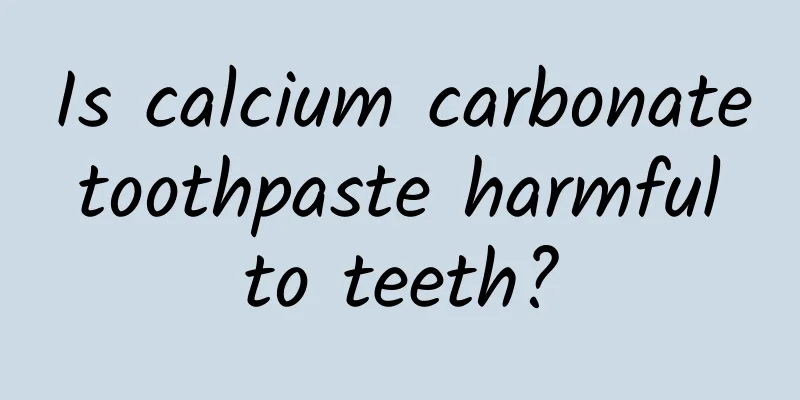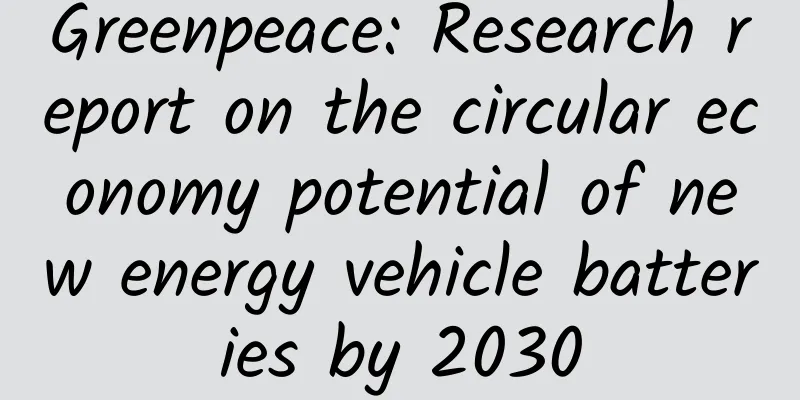Is calcium carbonate toothpaste harmful to teeth?

|
As an oral care product, the safety of toothpaste is naturally very important. As the main component of toothpaste, the safety of abrasives is even more of a primary issue. However, there has always been a saying on the Internet that due to the high hardness of calcium carbonate, toothpaste using calcium carbonate as an abrasive can cause great damage to teeth and should be avoided as much as possible. Is this really the case? Image source: Internet 01 It's not the abrasives in toothpaste that can hurt your teeth Teeth have always been the subject of much testing. In terms of wear alone, there are four types of tooth injuries: abrasive wear (caused by chewing, brushing, bruxism, etc.), corrosive wear (such as tooth erosion), fatigue wear (such as wedge-shaped defects) and adhesive wear (common in dental implants). Without a doubt, the most common cause of tooth abrasion is the friction between the upper and lower teeth and between them and food caused by chewing. In addition to chewing, brushing is also the main cause of tooth abrasion. The abrasion of teeth caused by brushing is related to the abrasiveness of toothpaste abrasives, the hardness and end shape of toothbrush bristles, and the pressure, duration and frequency of brushing. Factors related to the abrasiveness of abrasives include the hardness, shape, size and concentration of abrasive particles. Obviously, whether brushing your teeth will cause damage to your teeth cannot be concluded simply by confirming the composition of a certain abrasive. 02 Factors affecting the abrasiveness of friction agents and criteria for determination As mentioned above, factors that affect the abrasiveness of friction agents include the hardness, shape, size and concentration of the friction agent particles. In terms of the hardness of the friction agent particles alone, calcium carbonate is actually a relatively soft friction agent, while the so-called hydrated silica is harder. Image source: Reference 1 So why do many data show that calcium carbonate is more abrasive than hydrated silica? This is actually related to the difference in the particle shape of the two. Calcium carbonate crystals can be columnar or rhombic, while hydrated silica particles are spherical. As a result, the softer calcium carbonate is more abrasive than the harder hydrated silica. In addition, the size and concentration of the friction agent particles will also affect the abrasiveness of the friction agent. Specifically, the smaller the size of the friction agent particles, the lower its abrasiveness, but too fine particles (<1 μm) will produce a "re-coarsening" phenomenon, so it is not true that the smaller the particle size, the better; and the greater the concentration of the abrasive particles, the lower its abrasiveness may be, which may be the result of the particles being too dense and causing their rolling to be hindered. In summary, the abrasiveness of abrasives is not only related to the hardness of its particles, but also affected by many factors. So, since we cannot draw conclusions about the abrasiveness of abrasives based solely on the hardness of the particles, it may not be appropriate to draw conclusions based solely on the shape of the particles. It is somewhat arbitrary to judge without thinking that calcium carbonate toothpaste is "damaging to teeth" toothpaste. It is currently believed that the determination of the abrasiveness of abrasives has an objective scientific basis. The measurement standard is the radioactive (relative) dentin abrasiveness (RDA), which is the abrasiveness of toothpaste tested under exactly the same conditions relative to standard abrasive materials. The upper limit of the RDA value recommended by the FDA is 200. Literature has listed the RDA values of abrasives of various brands of toothpaste. It is not difficult to see that even for toothpastes containing the same abrasive, their RDA values are not the same. In addition, some toothpastes do not use only one abrasive ingredient, but use different abrasive ingredients in combination to complement each other's strengths and avoid weaknesses. Image source: Reference 2 03 Other indicators for measuring the abrasiveness of toothpaste abrasives In addition to RDA, tooth surface roughness (R) and film cleaning rate (PCR) are also indicators to measure the abrasiveness of abrasives. Contrary to people's expectations, R value and PCR value are not positively correlated with RDA value. In other words, a high RDA value does not mean that the abrasive will make the tooth surface rougher, nor does it mean that it has a stronger ability to clean teeth. Even the claim that whitening toothpaste hurts teeth may be exaggerated. The main reason why hydrated silica is widely used as an abrasive is its stability and compatibility (it can coexist peacefully with other ingredients in toothpaste such as fluoride). Therefore, calcium carbonate toothpaste is not a so-called "tooth-damaging" toothpaste. In most cases, toothpaste that meets production standards is safe and reliable, so there is no need to worry about choosing the wrong toothpaste. The key is to pay attention to the selection of appropriate brushing tools, that is, the choice of toothbrush, and the specific brushing method, such as the position and angle of the toothbrush, the strength of brushing, etc. References 1.Epple M, Meyer F, Enax J. A critical review of modern concepts for teeth whitening[J]. Dent J (Basel), 2019, 7(3): 79. 2.Johannsen G, Tellefsen G, Johannsen A, et al. The importance of measuring toothpaste abrasivity in both a quantitative and qualitative way[J]. Acta Odontol Scand, 2013, 71(3-4): 508-17. 3.Hara AT, Turssi CP. Baking soda as an abrasive in toothpastes: mechanism of action and safety and effectiveness considerations[J]. J Am Dent Assoc, 2017, 148(11S): S27-S33. 4. Wang Hongwei, Liu Dushu, Li Xingda. Evaluation of the friction performance of toothpaste abrasives[J]. Oral Care Products Industry, 2010(3): 42-44. The article is produced by Science Popularization China-Creation Cultivation Program. Please indicate the source when reprinting. The pictures in this article are from the copyright gallery and are not authorized for reproduction. Author | Rich Review | Si Yan, Chief Physician and Associate Professor, Department of Oral Preventive Health Care, Peking University School of Stomatology |
<<: There is only 16.1 kilometers between you and Beckham
>>: “Zero-additive” foods are better? Wrong!
Recommend
Why is Salmonella the leading culprit in food poisoning?
Recently, many children in a kindergarten in Lian...
How much does it cost to develop a Chuzhou travel agency mini program? How much is the price for developing a Chuzhou Travel Agency mini program?
The factors affecting the quotation of Chuzhou Tr...
Xbox One finally has a new feature that PS4 doesn't have
As we all know, the new generation of game console...
Where can I open the Douyin live broadcast console? What are the functions?
Just like Taobao Live has a Taobao Live console, ...
What are the most effective APP promotion channels at present?
What exactly is APP promotion for? Is it a channe...
【Photo Editing】Photo Editing Class
【Photo Editing】A brief introduction to the resour...
How to attract new customers through online and offline activities!
I recently watched some videos on Bilibili. There...
Intel: How to support Cocos engine
At the recently held Cocos 2014 Developer Confere...
How was the world's first telegram sent? Uncovering the birth and evolution of the telegram
Throughout human history, the transmission of inf...
If a thyroid nodule grows, will it definitely develop into cancer? Many people’s answers are wrong
The thyroid gland is the largest endocrine gland ...
What is the difference between WeChat Phonebook and VoLTE?
WeChat Phonebook is now online! How big of an imp...
More than 60% of consumers have misunderstandings about these 4 issues regarding food additives!
The use of food additives has a long history. Wit...
How much does it cost to develop a WeChat applet ordering system?
How much does it cost to develop a WeChat mini pr...
Live broadcast process planning and promotion methods!
Live streaming e-commerce is like a super “human ...









